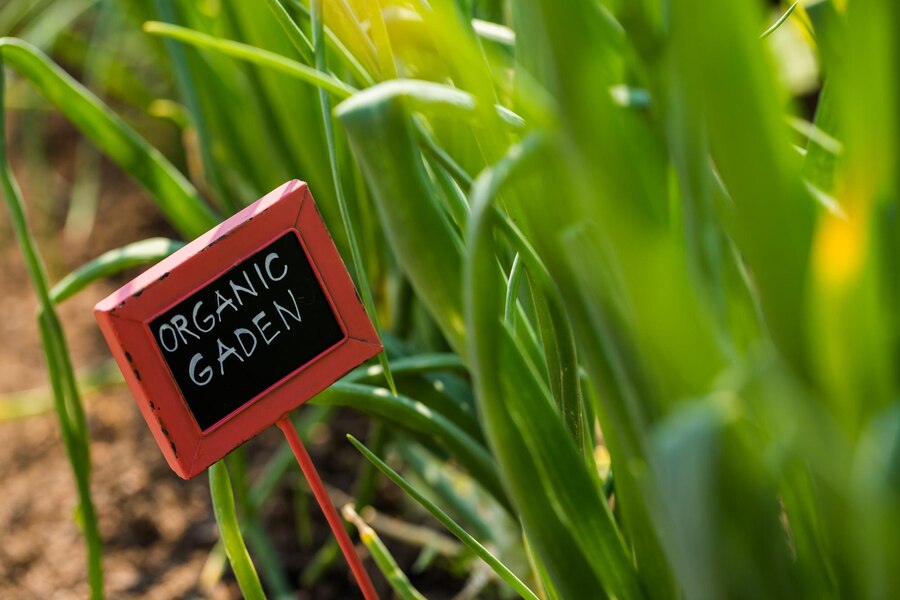Garlic (Allium sativum) has been a staple in kitchens and medicine cabinets for centuries. Its pungent aroma, rich flavor, and numerous health benefits make it one of the most popular and versatile crops worldwide. However, as environmental concerns rise and agricultural practices come under scrutiny, farmers and enthusiasts alike are turning to eco-friendly garlic cultivation techniques to ensure a sustainable future for this beloved crop.
In this article, we will explore various eco-friendly garlic cultivation techniques, how they benefit the environment, and the best practices for growers aiming to produce high-quality, chemical-free garlic while preserving the ecosystem.
Why Eco-Friendly Garlic Cultivation Matters
The global demand for garlic continues to grow, but conventional farming practices often rely on chemical fertilizers, pesticides, and water-intensive methods that can degrade the soil, harm local wildlife, and contribute to climate change. By embracing eco-friendly farming techniques, garlic farmers can reduce their carbon footprint, protect biodiversity, and produce food in a way that nurtures the earth.
In fact, adopting sustainable practices in garlic cultivation doesn’t just benefit the planet—it’s also advantageous for farmers. By focusing on soil health, water conservation, and natural pest control, growers can achieve better long-term yields and lower operational costs.
Essential Eco-Friendly Garlic Cultivation Techniques
1. Soil Health Management
Soil health is the cornerstone of any successful farming operation. In garlic cultivation, maintaining rich, fertile soil is essential to producing healthy bulbs. Eco-friendly soil practices include:
- Crop Rotation: Avoid planting garlic in the same plot year after year. This helps prevent soil depletion and the buildup of pests and diseases specific to garlic. Rotating garlic with other crops like beans or peas enhances soil nitrogen content and reduces the risk of disease.
- Composting: Incorporating organic matter into the soil is one of the best ways to enrich it. Homemade compost made from kitchen scraps, garden waste, and farmyard manure adds essential nutrients and improves soil structure. Composting also reduces the need for synthetic fertilizers.
- Cover Cropping: Planting cover crops like clover, vetch, or rye can help prevent soil erosion, improve soil organic matter, and fix nitrogen, which is beneficial for garlic growth. These crops also attract beneficial insects and contribute to overall farm biodiversity.
2. Natural Fertilization Techniques
Fertilizing garlic the eco-friendly way is all about using natural, sustainable methods that boost soil health without resorting to synthetic chemicals.
- Organic Fertilizers: Use natural fertilizers like composted manure, worm castings, or fish emulsion. These organic fertilizers provide a slow-release source of nutrients, reducing the risk of over-fertilization and leaching into the environment.
- Green Manure: Planting green manure crops like clover or mustard between garlic planting cycles not only improves soil health but also enhances the nutrient content of the soil when tilled back in.
- Seaweed Extract: Seaweed is a great natural source of micronutrients, trace elements, and growth hormones. Applying seaweed extract as a foliar feed can stimulate healthy garlic growth without the use of harsh chemicals.
3. Water Conservation and Efficient Irrigation
Watering is a critical component of garlic farming, but conventional irrigation techniques can waste large amounts of water. Eco-friendly garlic cultivation methods focus on using water more efficiently:
- Drip Irrigation: This irrigation method delivers water directly to the roots of the plants, reducing water waste and preventing diseases that thrive in overly wet environments. It also minimizes evaporation, making it ideal for regions with limited water resources.
- Rainwater Harvesting: By installing a rainwater harvesting system, garlic growers can collect and store rainwater for irrigation. This not only conserves potable water but also provides a sustainable, cost-effective water source.
- Mulching: Using organic mulches like straw or wood chips around garlic plants helps retain moisture, regulate soil temperature, and suppress weed growth. This reduces the need for frequent watering and conserves water in the soil.
4. Integrated Pest Management (IPM)
Instead of relying on harmful chemical pesticides, IPM involves using a combination of biological, cultural, and mechanical methods to control pests while minimizing harm to the environment.
- Beneficial Insects: Introducing natural predators such as ladybugs, predatory beetles, or parasitic wasps can help control harmful pests like aphids and thrips. These insects reduce the need for chemical interventions and promote a balanced ecosystem.
- Trap Cropping: Certain plants, such as marigolds or mustard, can be planted around garlic fields to attract pests away from the garlic plants. This method is particularly effective for controlling pests like aphids and root maggots.
- Neem Oil and Garlic Spray: Neem oil, derived from the neem tree, is a natural pesticide that disrupts the feeding and reproduction cycles of many pests. A garlic spray made from crushed garlic, water, and a few drops of dish soap can also deter insects.
5. Weed Control
Weeds can compete with garlic for nutrients, water, and light. Traditional herbicides can be harmful to the environment and beneficial organisms, but there are eco-friendly methods to manage weeds effectively:
- Hand Weeding: Regularly removing weeds by hand or using hand tools is a labor-intensive but effective way to maintain weed-free garlic beds without chemicals.
- Mulching: As mentioned earlier, mulching also helps suppress weed growth by blocking sunlight from reaching weed seeds and seedlings.
- Solarization: This involves using clear plastic sheeting to trap sunlight and heat the soil, effectively killing weed seeds and pathogens in the soil. It’s a natural, non-toxic way to control weeds without harming the environment.
6. Post-Harvest Management
Sustainable practices extend beyond planting and cultivation. Proper post-harvest management ensures that garlic remains fresh, flavorful, and free from chemical residues.
- Proper Drying: After harvest, garlic should be dried in a cool, dry, and well-ventilated area. This prevents mold and rot and helps garlic bulbs maintain their flavor and quality. Properly cured garlic also has a longer shelf life.
- Storage in Eco-Friendly Packaging: When it comes to packaging and storing garlic for sale, using eco-friendly materials like recyclable paper bags or biodegradable plastic can reduce waste and environmental impact.
Eco-Friendly vs. Conventional Garlic Cultivation
| Aspect | Eco-Friendly Garlic Cultivation | Conventional Garlic Cultivation |
|---|---|---|
| Soil Fertility | Organic fertilizers, composting, crop rotation, cover crops | Synthetic fertilizers, monoculture practices |
| Pest Management | Beneficial insects, neem oil, trap cropping, IPM | Chemical pesticides and herbicides |
| Water Management | Drip irrigation, rainwater harvesting, mulching | Flood irrigation, wasteful water usage |
| Energy Use | Renewable energy sources, low-tech solutions | Fossil fuels, large machinery, and high energy consumption |
| Biodiversity | Promotes biodiversity through companion planting, IPM | Often reduces biodiversity with monoculture and pesticide use |
| Soil Health | Focus on maintaining healthy soil through organic methods | Soil depletion, erosion, and contamination from chemicals |
| Waste Management | Composting, eco-friendly packaging | Chemical waste, plastic packaging |
Challenges in Eco-Friendly Garlic Cultivation
Despite the clear benefits, transitioning to eco-friendly garlic cultivation techniques isn’t always easy. Some challenges that farmers may encounter include:
- Initial Investment: Organic fertilizers, specialized equipment, and eco-friendly irrigation systems can require a higher upfront investment.
- Labor-Intensive Practices: Many eco-friendly techniques, such as hand weeding and crop rotation, are more labor-intensive than conventional methods.
- Market Access: While organic garlic is becoming increasingly popular, finding reliable markets for eco-friendly produce can be challenging, especially in regions where conventional farming dominates.
However, as the demand for organic and sustainable products increases, these barriers are becoming easier to overcome, with more farmers turning to eco-friendly methods for long-term success.
Conclusion
As we move toward a more sustainable future, eco-friendly garlic cultivation techniques offer a promising path for garlic farmers to reduce their environmental footprint while producing high-quality crops. From soil health management and natural fertilization to water conservation and integrated pest management, these practices provide farmers with a blueprint for sustainable garlic farming.
Not only do these techniques benefit the environment, but they also offer farmers the opportunity to reduce costs, increase efficiency, and meet the growing consumer demand for sustainable, chemical-free produce. By adopting eco-friendly practices, garlic growers can ensure that this beloved crop remains a staple in kitchens around the world for generations to come.










